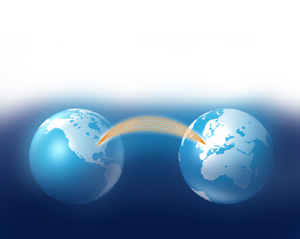http://www.republika.co.id/online_detail.asp?id=188968&kat_id=23
Dari 26 Rumah Sakit (RS) yang berada di Kotamadya Jakarta Timur, baru 20 RS yang memiliki Instalasi Pengolahan Air Limbah (IPAL). "Ini artinya, enam rumah sakit lainnya beresiko untuk mencemari lingkungan, akibat limbah mereka," Selain itu, ungkap Utomo, baru 14 RS yang memiliki dokumen. "Dan yang telah mengimplementasikan dokumen tersebut hanya sembilan rumah sakit saja," jelasnya. Ia juga menambahkan 18 RS telah memiliki insenerator. Namun, katanya, insenerator tersebut belum ada yang kerjanya benar-benar baik.
More about IPAL :
http://www.depkes.go.id/index.php?option=news&task=viewarticle&sid=60&Itemid=2
Kendati Departemen Kesehatan telah menyusun Standar Pelayanan Minimal (SPM) untuk mengukur kualitas pelayanan kesehatan dasar yang salah satunya adalah kewajiban rumah sakit dan Puskesmas untuk mengolah limbahnya. Namun Menkes mengakui bahwa penerapannya masih belum baik. Berdasarkan hasil assesment tahun 2002, diketahui bahwa baru 49 % dari 1.176 rumah sakit (526 rumah sakit pemerintah dan 652 rumah sakit milik swasta) di 30 provinsi, baru 648 RS yang memiliki incinerator dan 36% memiliki IPAL (Instalasi Pengolah Air Limbah) dengan kondisi sebagian diantaranya tidak berfungsi
How IPAL works ?
http://www.pdpersi.co.id/pdpersi/news/kesling.php3?id=180
case : RS St.Carolus
Ket:
Incinerator: Tempat Pembakaran.
JP III: Jasa Pihak ke-3.
limbah non medis ini terbagi menjadi dua bagian, yaitu limbah basah dan limbah kering. Limbah basah bisa berupa sisa-sisa sayuran, makanan, sisa nasi, dan sebagainya. Limbah ini kemudian bisa dimanfaatkan untuk makanan ternak. Sementara untuk limbah kering, jika masih bisa dimanfaatkan atau dijual, maka akan dijual, seperti kardus-kardus bekas dan sebagainya. Tapi untuk yang tidak bisa dijual, maka sebaiknya langsung dibakar.
Sementara limbah medis terdiri dari infeksius dan non infeksius. Limbah infeksius non cair biasanya langsung dibakar. Misalnya jarum suntik, pisau bekas operasi, bekas perban, infus dan sebagainya. Sementara yang cair akan masuk pada IPAL. Limbah non infeksius sendiri akan dipilah secara selektif. Yang cair tentu saja masuk IPAL. Yang non cair, jika bisa didaur ulang, maka akan di daur ulang. Untuk yang tidak bisa di daur ulang akan langsung dibakar.
untuk membangun IPAL di RS Carolus dibutuhkan biaya sekitar 1,5 milyar!!. Biaya besar ini terhitung cost saja, tanpa keuntungan secara materiil. Tetapi jika tidak membangun IPAL, maka kesehatan lingkungan hidup terancam
Limbah berbahaya ini bukan semata yang cair saja, melainkan juga yang padat. “Misalnya jarum suntik, pisau bekas operasi, botol-botol bekas, sisa bahan makanan penderita infeksius, perban dan lain-lain itu harus secara jelas dibedakan, lalu segera dimusnahkan atau dibakar,” “Sebab jika diambil alih pemulung, atau orang-orang yang tidak bertanggung jawab, bisa runyam..
Sementara mengenai limbah cair “Limbah laundry bisa infeksius karena mengandung cairan darah, atau sisa urine. Begitu juga dengan bahan-bahan spesimen lainnya yang berbentuk cair. Bisa infeksius, terutama dari orang-orang yang menderita penyakit menular.”
ada beberapa jenis pengelolaan IPAL. Yaitu Sistem Aerob/Bioreaktor, Sistem UnAerob, dan Sistem Founding.
Sistem Aerob adalah sistem yang membutuhkan banyak oksigen, dan dilakukan di lahan terbuka sehingga mempermudah pengontrolan. Keuntungannya antara lain, lahan yang digunakan sempit, lumpur yang dihasilkan sedikit, bahan kimia yang dipergunakan juga sedikit, dan pemakaian listrik minimal. Proses pengolahan waktu pada sistem aerob adalah empat hingga enam jam.
Sistem Unaerob adalah sistem yang tidak membutuhkan oksiogen. Oleh karenanya dilakukan di ruangan tertutup. Lahan yang dibutuhkan Unaerob cukup luas. Sayangnya, jika ada kebocoran sulit dikontrol (pengawasan lebih sulit). Selain itu, jika terjadi kebocoran, bau sulit dicegah dan jumlah lumpur yang harus dibuang cukup banyak. Keuntungannya, dari segi estetika unaerob lebih unggul, karena limbah tak terlihat dan disimpan di bawah tanah (semacam septic tank).
Sedangkan sistem founding adalah sistem yang membutuhkan lahan luas. Pross pengendapan dan penguraian biologis membutuhkan waktu yang lama, karena dilakukan secara alami. Dalam founding, proses pengolahan antara empat hari hingga seminggu.
